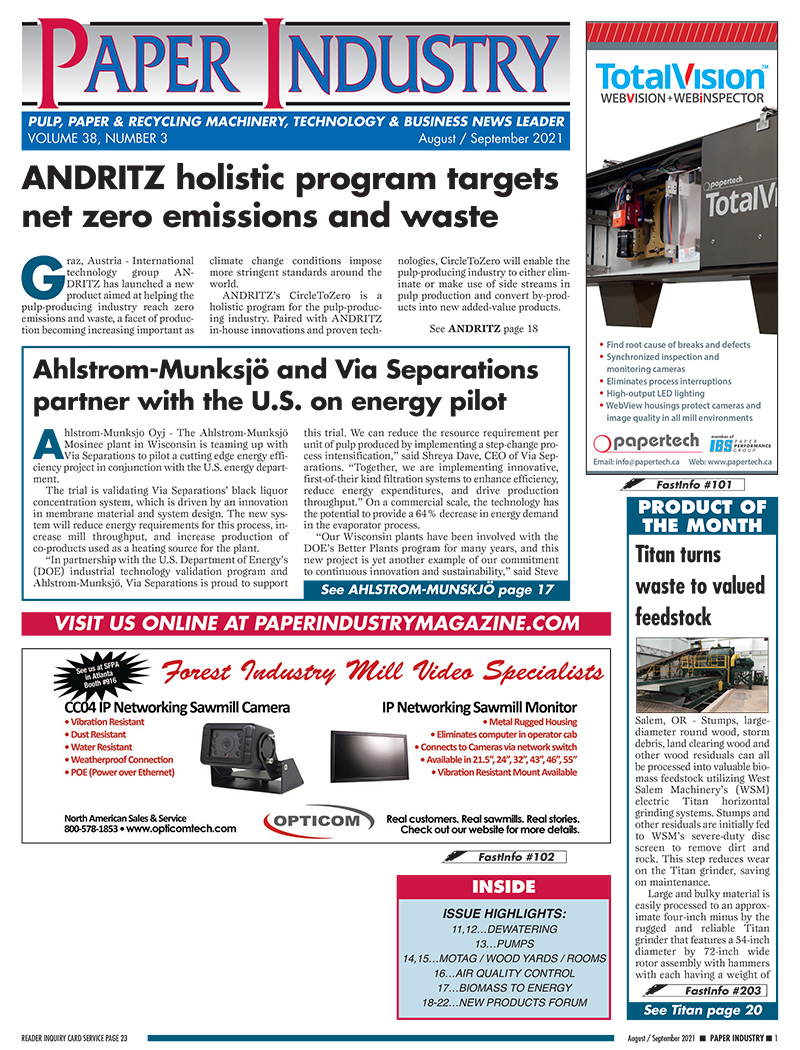Valmet recovery ash analyzer and balance advisor improves ash treatment in boilers
Espoo, Finland - The new Valmet recovery ash analyzer reduces unplanned boiler shutdowns and provides guidance for ash treatment and soot-blowing needs. Valmet ash balance advisor is an additional option to optimize ash treatment for significant cost savings in sodium make-up.
In recent years, the drive to increase power generation from recovery boilers has been boosted by environmental factors and the growing focus on renewable energy sources, in addition to increased pulp mill efficiency. Unlike boilers developed solely for power generation, recovery boilers have lower steam parameters (temperature and pressure) and thus lower steam to electricity ratios. Although the ratio of kg of generated steam per kg of liquor solids has actually increased by more than 20 percent in the last decade, limiting factors for the recovery boiler are the fuel/ash properties and the corrosion resistance of super-heater materials for these conditions.
The Valmet ash balance advisor calculates the corrosion risk and advises how much ash needs to be treated or dumped. It also determines associated sodium make-up costs. This is compared to the loss of electricity production if the main steam temperature is decreased instead. The control action can then be made on the basis of the lowest possible operating cost.
As pulp mill chemical recovery becomes more efficient, with minimized emissions, effluents and waste streams, the accumulation of non-process elements (NPE) in the liquor circulation creates challenges. For the recovery boiler, most potentially harmful NPE are chloride (Cl) and potassium (K), which can cause severe corrosion of the recovery boiler’s heat exchangers in high concentrations. They also lower the melting temperature of the boiler fly ash and increase potential for flue gas passages becoming fouled or plugged.
Ash treatment provides the means to decrease the level of harmful Cl and K, while retaining valuable sodium and reducing environmental impact, with less ash removed from the closed process than ash dumping. Unfortunately, ash treatment is typically based on infrequent and incomplete laboratory tests, with no standard criteria for when to start treating or dumping ash.
Electrostatic precipitator (ESP) ash balance as measured by the analyzer over 25 days together with the corresponding ash melting temperatures calculated by the analyzer over the same period.
Sodium make-up is very expensive, and treating too much ash or treating ash with low efficiency significantly increases operating costs. However, if insufficient ash is treated, the recovery boiler can suffer plugging, increased consumption of soot-blowing steam and in the worst-case, super-heater corrosion and an increased need for water washes, with associated production stoppages. More frequent knowledge of ash composition is the key to an improved recovery boiler and ash treatment plant controls, leading to higher boiler efficiency and availability.
The recently introduced Valmet recovery ash analyzer offers an innovative online solution for measuring fly ash composition at the ESP. It continuously measures the complete chemical balance of carbonate, sulfate, chloride, potassium, and sodium concentrations, as well as calculating the critical ash melting temperatures that determine fouling and corrosion risks.
The ESP ash sample is taken from the ash drop shaft after the ash conveyor by a robust stainless-steel sampler.
Valmet ash balance advisor software provides an online view of ash balance and boiler operation parameters to give an operating target for ash treatment volume, while keeping sodium losses and operational costs at optimal levels. The result is an enhanced removal of chloride and potassium from the recovery loop with optimized cost balance between fresh chemical makeup and electricity generation, while extending boiler cleaning intervals.






